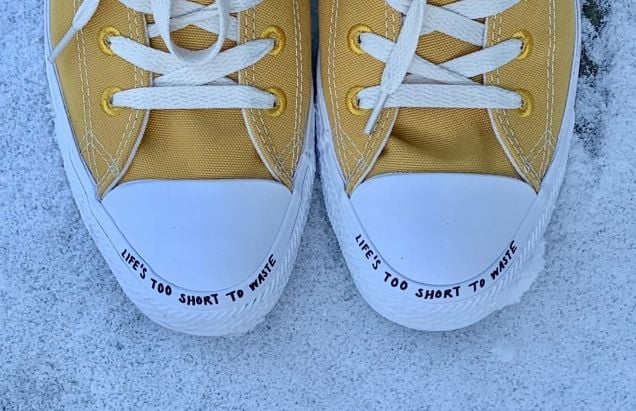3 min read
Why You Really Do Need to Create and Keep a Copy of All Your Files
I won’t keep you waiting and wondering. In my mind, the reason is self-evident. If you ever find yourself having to deal with a malpractice claim...
We've crafted solutions tailored to your firm
The world of insurance for law firms can be confusing, and difficult to navigate. We've created this glossary because these common insurance terms should be easy to understand.
4 min read
 Mark Bassingthwaighte, Risk Manager
:
Apr 6, 2022 12:00:00 AM
Mark Bassingthwaighte, Risk Manager
:
Apr 6, 2022 12:00:00 AM

Sometimes when a lawyer calls in, there is a despondency in the voice that comes across loud and clear. The lawyer isn’t always aware of it; but usually by the time the call ends, that has changed. During such calls, lawyers have shared they feel abused, taken advantage of, threatened, or obliged to stay the course. Others have actually shared they feel victimized and almost powerless. I have come to refer to this type of call as a life is too short call because the call always ends up being about dealing with the reality that an attorney-client relationship has completely broken down. As I see it, since that’s what was driving the despondency, life is too short to stay in the game. When on such a call, all I try to do is help the lawyer realize that perhaps the time has come to fire the client and move on. Afterall, continuing to work in a state of despondency serves no one. This is when the conversation can get interesting.
I say this because exiting a dysfunctional relationship comes with its own challenges. It isn’t always easy, and the excuses must be addressed. Let’s start with a lawyer’s obligations. Some fear they can’t withdraw because doing so may or will adversely affect the legal interests of the client. Not true! ABA Model Rule 1.16 Declining or Terminating Representation enumerates several factors permitting withdrawal even if doing so might have a “material adverse effect on the interests of the client.”
Of import here is 1.16(b)(6), which states that a lawyer may withdraw if “the representation will result in an unreasonable financial burden on the lawyer or has been rendered unreasonably difficult by the client.” (Emphasis supplied.) When a client’s actions and behaviors are such that there is a complete breakdown of the attorney-client relationship, I’m pretty confident in stating this Rule is now in play. So yes, it’s okay to say goodbye to the client with ever-changing objectives who is substantially in arrears, has become very difficult to reach, is beyond unreasonable, and who is going to have an extremely difficult time finding another lawyer willing to take over.
That said, don’t overlook, Rule 1.16(d), which states: “Upon termination of representation, a lawyer shall take steps to the extent reasonably practicable to protect a client’s interests, such as giving reasonable notice to the client, allowing time for employment of other counsel, surrendering papers and property to which the client is entitled and refunding any advance payment of fee or expense that has not been earned or incurred.” While Model Rule 1.16 recognizes that a permissive withdrawal might have a material adverse effect on the interests of a client, this in no way should be interpreted as giving you permission to maximize any adverse effects. You do need to take whatever reasonably practical steps you can to try and minimize those adverse effects. Yes, I know this can be hard and at times doesn’t seem fair or perhaps right; but this responsibility does come with the territory. Be the professional you are.
Next up is the dysfunctional relationship itself. One concern that consistently comes up is a fear of being sued or having this client file a disciplinary complaint if the lawyer tries to withdraw. I’m often asked what can be done to prevent that from happening. Here’s the honest answer. This problem client is going to do whatever he or she decides to do. There’s nothing you or anyone else can do to prevent them from filing a complaint or making an allegation of malpractice.
All I can say is staying in a dysfunctional relationship isn’t the answer and just because a claim is alleged, or a complaint is filed doesn’t mean either have any merit. If this does happen, those waters can be successfully navigated. The best advice I can share is again, life is too short. Withdraw, and once that’s completed, commit to remaining completely disengaged from the relationship. You actually don’t need to respond to any email, text, or voicemail that might follow. Remember that it takes two to have a dysfunctional attorney-client relationship. Once you end this relationship, you’re out. Stay out! Never allow yourself to get pulled back in.
Now, about the exit itself. If this is a litigated matter and you are the attorney of record, you will need to seek permission to withdraw. Admittedly, this can be problematic for some, because judges don’t always make the decisions we’d like them to make. Here’s the rub. That reality is no excuse for stating in your motion to dismiss that “this client is a complete a**, has no money, is cheating on his wife, and has made your life a living hell” all shared with the hope that this will help the judge see things your way. You simply cannot disparage your client or share client confidences in a motion to withdraw. Follow the advice set forth in Comment [3] to ABA Model Rule 1.16, which states: “The lawyer’s statement that professional considerations require termination of the representation ordinarily should be accepted as sufficient.”
Another rule that comes into play when exiting is ABA Model Rule 1.4 Communications. You have an obligation to keep your clients informed about the status of their matters and enable them to make informed decisions. This obligation doesn’t end once you decide to fire a client. When withdrawing from representation, particularly under these circumstances, I strongly encourage you to think about this rule and document your way out. There are risk management reasons for doing so as well.
First, don’t make this personal, don’t apologize, and don’t try to justify your decision by setting forth a laundry list of reasons why. Again, be the professional that you are. Simply state your decision to withdraw and detail the status of the matter at the time of your withdrawal. For example, if there are deadlines approaching, let the client know what they are and what the legal ramifications would be if an issue isn’t addressed prior to any deadline. The goal is to make certain that this client is fully informed as to the status of the matter, thus enabling them to make informed decisions going forward now that you are out.
Finally, once the dust settles and you’ve had a little time to recover, don’t forget to look for the learning. Ask yourself, and anyone else at your firm who was involved with this client, questions like the following. Were there any warning signs, particularly during client intake? If not, as the relationship started to sour, were there warning signs you should have paid attention to? Is there anything you could have done differently that might have prevented the attorney-client relationship from deteriorating so significantly? My concern is that if you fail to ask and answer these kinds of questions, you run a higher risk of finding yourself in the same or similar situation down the road. So, I’ll say it one last time. Life’s too short! It’s worth taking a little time to look for the learning. Trust me. It’s there.
Since 1998, Mark Bassingthwaighte, Esq. has been a Risk Manager with ALPS, an attorney’s professional liability insurance carrier. In his tenure with the company, Mr. Bassingthwaighte has conducted over 1200 law firm risk management assessment visits, presented over 600 continuing legal education seminars throughout the United States, and written extensively on risk management, ethics, and technology. Mr. Bassingthwaighte is a member of the State Bar of Montana as well as the American Bar Association where he currently sits on the ABA Center for Professional Responsibility’s Conference Planning Committee. He received his J.D. from Drake University Law School.

3 min read
I won’t keep you waiting and wondering. In my mind, the reason is self-evident. If you ever find yourself having to deal with a malpractice claim...
1 min read
Don’t lose sleep. It’s easy enough to say, but how can you intentionally work towards not allowing worry to consume you? Guest Blogger Karen...

When I was young, I tried to bake cookies on my own as a surprise for the rest of my family who was away for a few hours. I had yet to appreciate the...